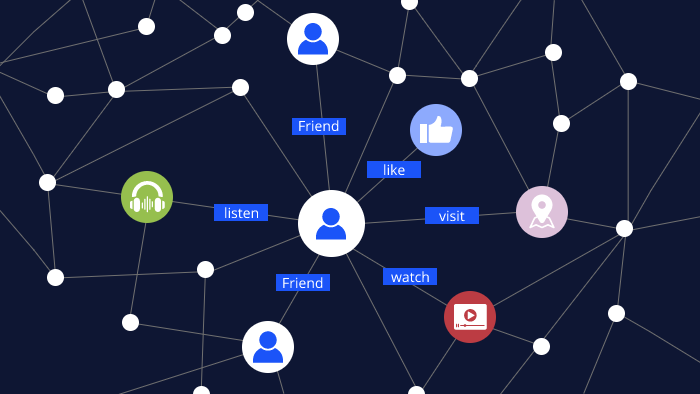Hey there! Have you ever wondered how some of the world’s biggest brands are always a step ahead in delivering exactly what you want, when you want it? Well, it’s no secret. The key lies in how they use data to drive their marketing strategies. In this post, I’ll take you through some fascinating examples of how companies like Netflix, Amazon, and Spotify are using data to transform customer experiences. Let’s dive in!
1. Netflix: The Entertainment Revolution
Key Insight: Personalization is everything.
Imagine logging into Netflix and having a selection of movies or shows handpicked just for you! That’s no coincidence. Netflix uses advanced algorithms to analyze what you’ve been watching, creating personalized recommendations based on your tastes. This not only keeps you hooked but also helps Netflix produce shows and movies that truly resonate with their audience.
Takeaway for you: Think about how you can use data from your customers to personalize their experiences. When you give people what they love, they’ll keep coming back for more!
2. Amazon: The Art of Personalization
Key Insight: Recommendations drive sales.
We’ve all been there. You buy something on Amazon, and they immediately suggest other items you might like. Their recommendation engine is a masterpiece, analyzing your browsing and purchase history to provide product suggestions that feel spot-on. This strategy has not only increased their sales but also made shopping a breeze for customers like us!
Takeaway for you: Use data analytics to offer personalized product recommendations. The better the suggestions, the happier your customers will be.
3. Tesla: Driving Innovation with Data
Key Insight: Data fuels continuous improvement.
Tesla isn’t just a car; it’s a learning machine. Tesla vehicles collect real-time data, which the company uses to make improvements and roll out updates remotely. This means every Tesla is constantly evolving to offer better performance and safety, thanks to the power of data.
Takeaway for you: Create a feedback loop using customer data to continuously improve your product or service. Innovation never stops!
4. Airbnb: Unlocking New Opportunities
Key Insight: Data-driven pricing strategies.
Have you ever noticed that prices on Airbnb fluctuate? That’s because Airbnb uses data analytics to optimize pricing based on market trends, location, and demand. This helps hosts maximize their earnings while giving guests great deals on unique places to stay.
Takeaway for you: Use market data to refine your pricing strategy. The right price at the right time can do wonders for both your business and your customers.
5. Spotify: Your Personal DJ
Key Insight: Tailored content boosts engagement.
Ever had a Spotify playlist that felt like it was made just for you? That’s because it was! Spotify’s algorithms analyze your listening habits to create personalized playlists. This not only keeps you engaged but also supports emerging artists by introducing their music to listeners like you.
Takeaway for you: Use data to create personalized content that resonates with your audience. When you connect on a personal level, it leads to deeper engagement.
6. Coca-Cola: Targeting Through Social Media Insights
Key Insight: Social media insights power effective targeting.
Coca-Cola has taken social media to the next level. By using image recognition and social media analytics, they’re able to tailor ads based on user-generated content. These personalized ads have higher engagement rates than traditional marketing methods.
Takeaway for you: Social media is a goldmine of data. Tap into it to create targeted marketing campaigns that speak directly to your audience’s interests.
7. McDonald’s: Menu Personalization
Key Insight: Data-driven menu optimization.
Ever wonder why McDonald’s menu seems to change depending on the season or your location? That’s because they’re using data to optimize their offerings. By analyzing customer preferences, weather patterns, and local events, McDonald’s adjusts its menu to enhance the customer experience, especially in their drive-thrus.
Takeaway for you: Use contextual data, like weather or location, to personalize your offerings. The more relevant your product is to the customer, the better their experience will be.
These examples show how data can be a game-changer for any business. Whether you’re a startup or a large enterprise, embracing data-driven strategies can help you personalize experiences, improve customer satisfaction, and ultimately drive growth. So, how can you start using data to transform your business?
FAQs About Data-Driven Marketing
1. How can small businesses use data-driven marketing?
Small businesses can start by gathering customer data from website analytics, social media, and sales history. Tools like Google Analytics or social media insights can help you understand your audience’s preferences and tailor your marketing efforts accordingly.
2. Is it expensive to implement data-driven strategies?
Not necessarily. There are affordable tools out there that can help businesses of all sizes use data effectively. You don’t need to be a tech giant to benefit from data-driven marketing.
3. How can I ensure I’m using customer data ethically?
Always be transparent with your customers about how their data is being used. Follow data privacy laws and ensure you’re securing personal information to build trust with your audience.
4. Can data-driven marketing work for non-e-commerce businesses?
Absolutely! Whether you’re in healthcare, education, or hospitality, data can help you better understand your audience and offer personalized experiences that meet their needs.
